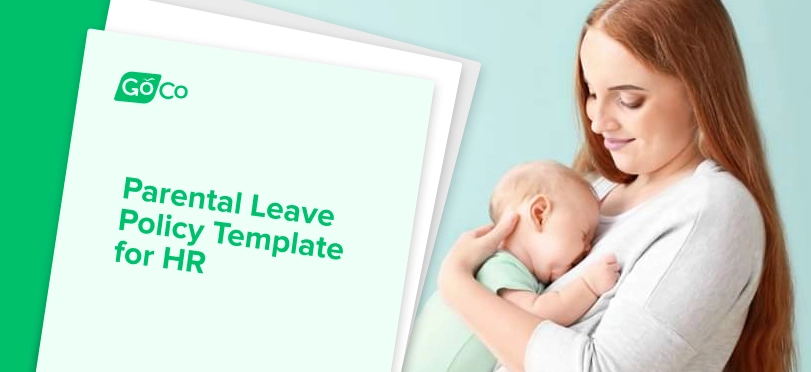How to Create a Parental Leave Policy + Free Template for HR Managers
by Elle Mason - May 27th, 2022
Parental leave is only one of the benefits that is at the forefront of employee demands in 2022. While it’s no new concept, more and more new hires are expecting more support for parental leave. This article provides a guide to creating a parental leave policy and why an inclusive one is crucial in the new workforce.
What is parental leave?
Parental leave is a form of leave for any parent of any gender and regardless of their birthing status to use in order to care for a new child. This is intended to be more inclusive than maternity or paternity leave, as it applies to all parents and all types of families.
Specifically, it can apply to:
A person who has just given birth
The spouse, domestic partner, or otherwise committed partner of a person who has just given birth
A parent who has just adopted a child
A surrogate parent who is recovering from childbirth
A parent who has just had a foster child placement
A parent who has just expanded their family through the use of a surrogate
Many other forms of new family extensions
What parental leave laws are in place in the US?
In the US, the Family and Medical Leave Act (FMLA) offers federal protections for parents after the adoption or birth of a child. However, this leave is unpaid, available for a maximum of 12 weeks and only applies to organizations with more than 50 employees.
How do you budget for a parental leave policy?
While this is a major concern for employers, research has found that the cost is well-worth it and in fact, pays back dividends in terms of commitment and longevity. One of the challenges is that when calculating salaries, employers assume no unpaid time will be taken. A way to circumvent this is to recognize that the budget for the employee is already set for the year, and any extra budget simply needs to cover the cost of their replacement or support to the manager/team in their absence. This can be done by contributing to an employee leave reserve on a regular basis so that it’s there - while the employee on parental leave receives their already accounted for salary as expected.
How to create an inclusive and thoughtful parental leave policy in 2022
In essence, the most inclusive and thoughtful policies show consideration that all types of people need parental leave and there are many, many ways to start a family - and each of them is valid and deserving of protection. While SHRM has provided a wonderful and thorough template for customizing your only policy, we’ve made some updates to their stated objectives below to maximize inclusivity. For example:
Purpose/Objective
[Company Name] will provide up to [enter number] weeks of paid parental leave to employees following the birth or other introduction of a child into the immediate family or household. The purpose of paid parental leave is to enable the employee to care for and bond with a newborn or a newly adopted or newly placed child, and/or to recover from the process of childbirth. This policy will run concurrently with Family and Medical Leave Act (FMLA) leave, as applicable. This policy will be in effect for births, adoptions or placements of foster children occurring on or after [date].
Eligibility
Eligible employees must meet the following criteria:
Have been employed with the company for at least [X months]
Be a full- or part-time, regular employee [or other type as applicable]
In addition, employees must meet one of the following criteria:
Have given birth to a child.
Be a spouse or committed partner of a person who has given birth to a child.
Have adopted a child or been placed with a foster child.
Have otherwise welcomed a new child into the immediate family (e.g. through surrogacy or other means).
How culture and leadership can support your parental leave policy
Leading by example and building a supportive overall work environment can go incredibly far in making new parents feel support. Specifically: offering paid leave, enforcing the leave by ensuring the employee isn’t being asked to work while they’re away, offering flexible hours when they return to work, and ensuring that the leave policy is continually refreshed and updated with inclusion in mind.
How GoCo Can Help
Requesting or approving parental leave time off — GoCo can simplify your PTO process, regardless of the type of paid leave. Track parental leave and have it appear directly on timesheets and calculations. Approve requests with a single click and report on all of your team’s data if necessary.
Distributing company policies digitally — change any document into a Magic Doc with custom fields, e-Signatures, acknowledgements and more. Easily upload your parental leave policy and distribute company wide in seconds. Require acknowledgements or signatures so your employees are always in the loop on policy updates.
Recommended Posts
23 Incentive Programs That Employees Love
Blog Articles
New Hire Paperwork & Onboarding Forms 2025
Blog Articles
Search...
Product
GoCo
Resources
Articles
eBooks
Webinars
Customer Stories




